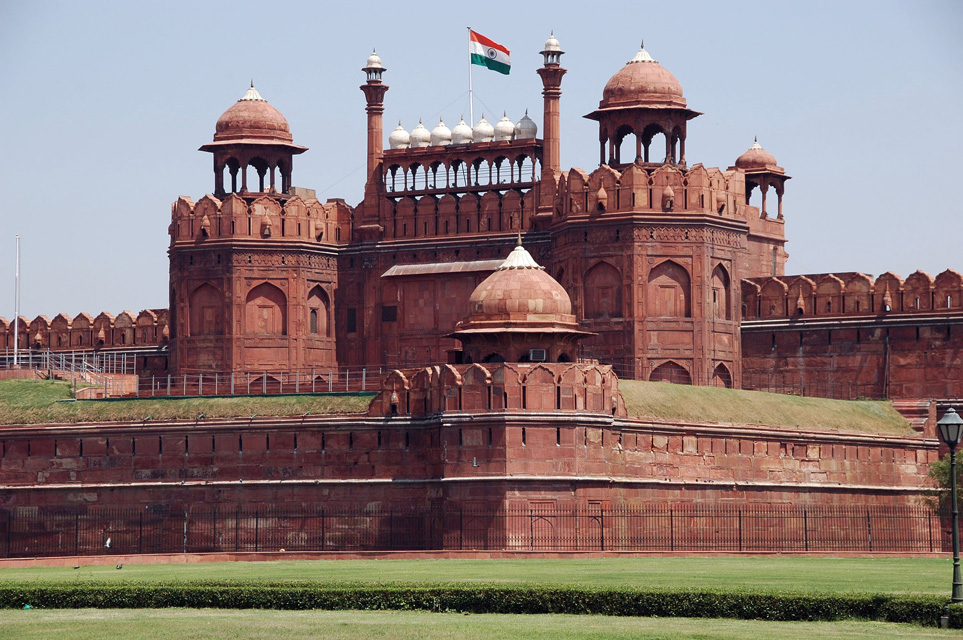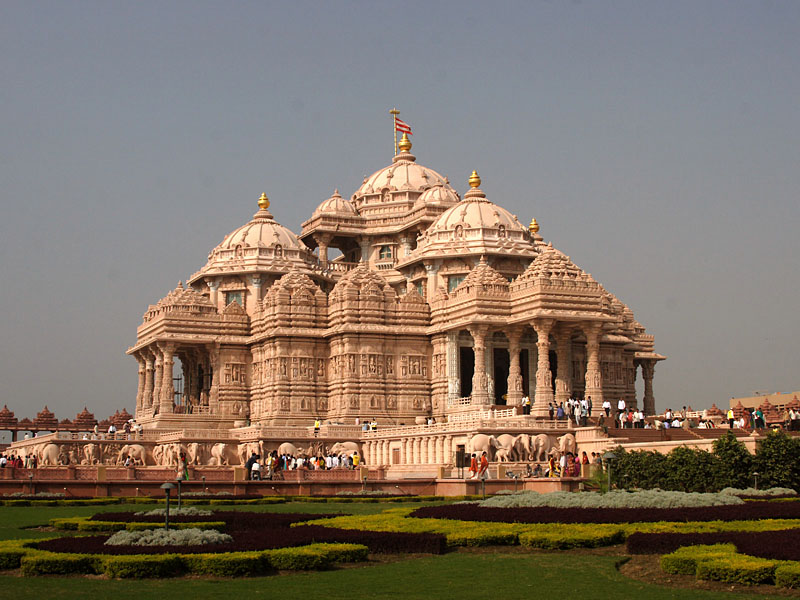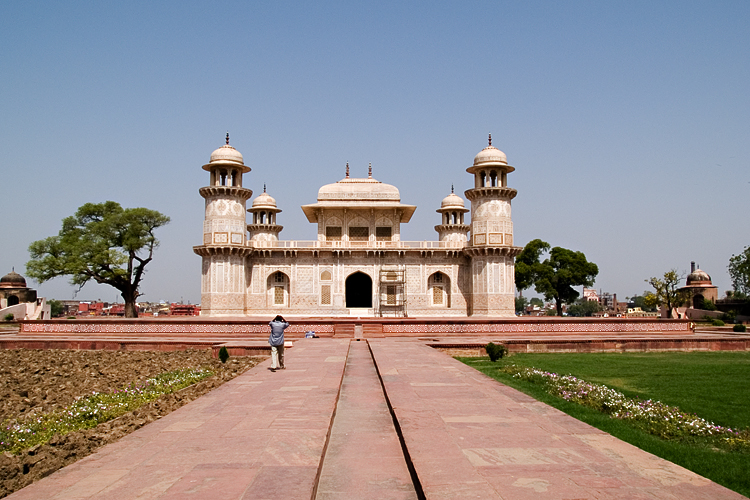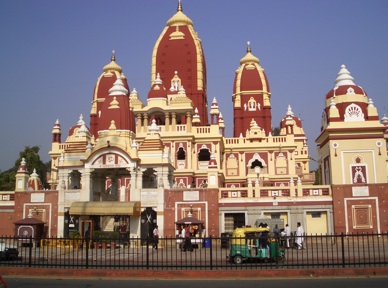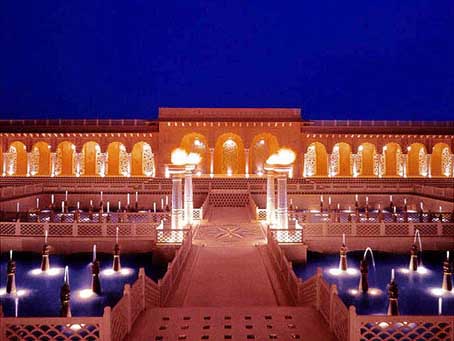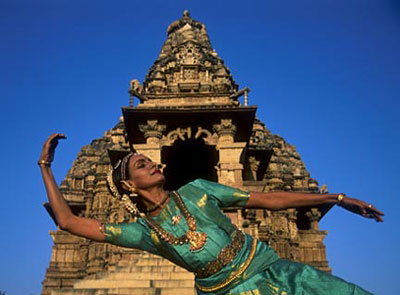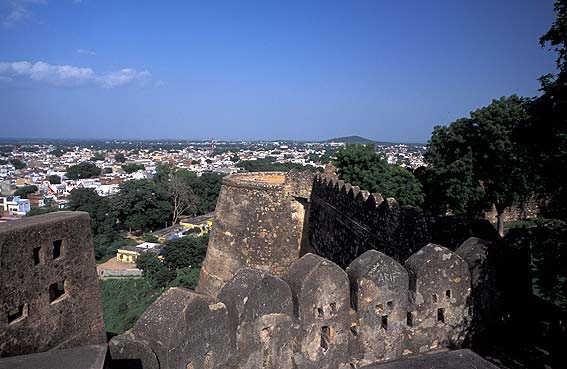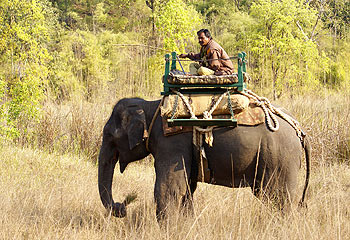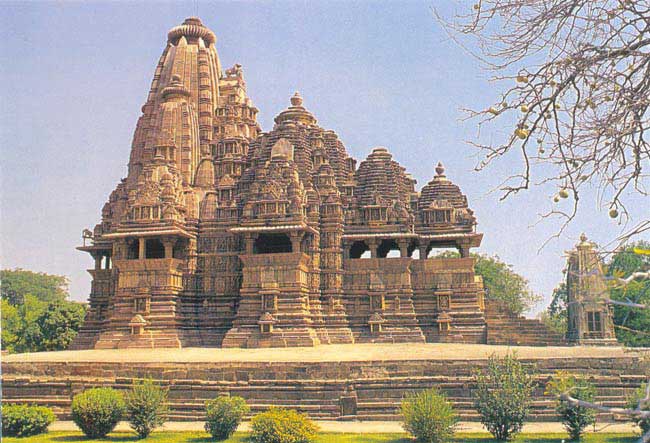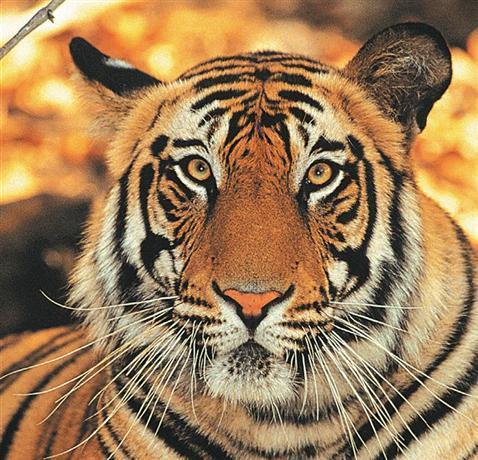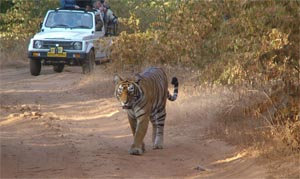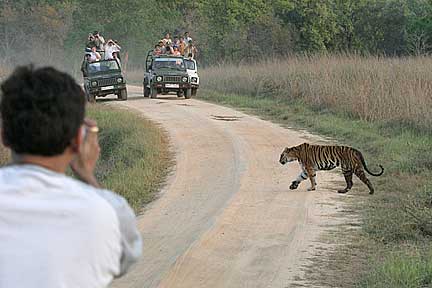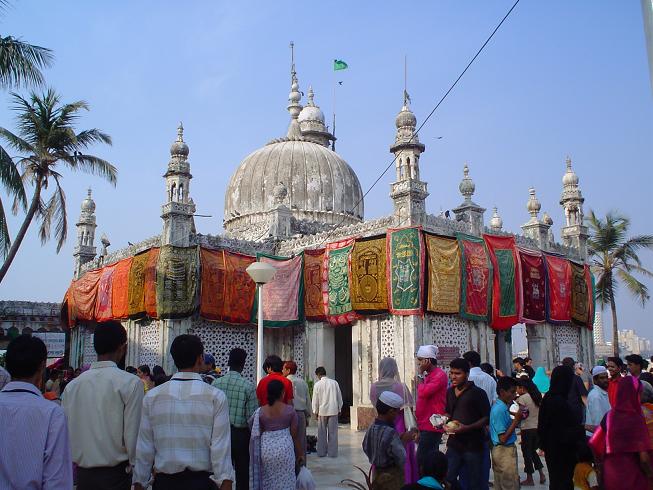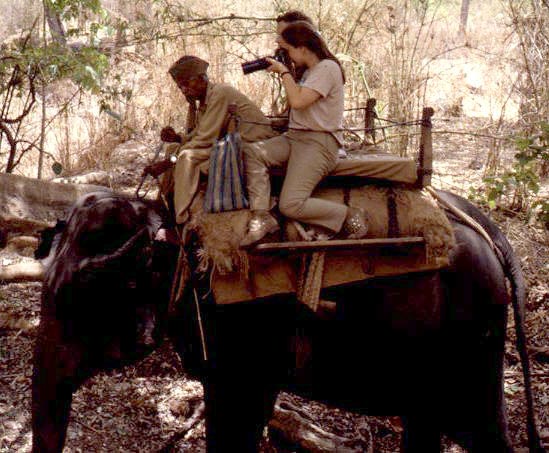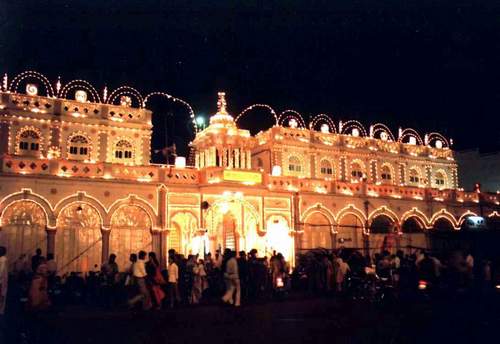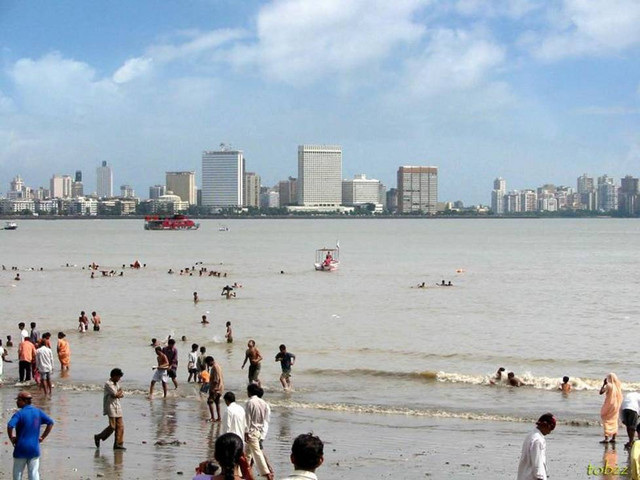Day 1: Delhi
 On arrival at Delhi, Our representative will welcome and transfer to the hotel.Overnight stay at hotel.
On arrival at Delhi, Our representative will welcome and transfer to the hotel.Overnight stay at hotel.
Day 2: Delhi
 Enjoy morning and evening sightseeing tours of Old Delhi and New Delhi. See the <a class="PIInfosoft-placeName" onclick="openAttractionDescriptionPopup('en', 'A7J','DEL','IND','India');" data-target="#PopUp5" href="javascript:void(0)" data-toggle="modal">Red Fort</a>, Jama Masjid and the bazaars of <a class="PIInfosoft-placeName" onclick="openAttractionDescriptionPopup('en', 'CNC','DEL','IND','India');" data-target="#PopUp5" href="javascript:void(0)" data-toggle="modal">Chandni Chowk</a> in Old Delhi and the <a class="PIInfosoft-placeName" onclick="openAttractionDescriptionPopup('en', 'A7K','DEL','IND','India');" data-target="#PopUp5" href="javascript:void(0)" data-toggle="modal">Qutub Minar</a>, <a class="PIInfosoft-placeName" onclick="openAttractionDescriptionPopup('en', 'A7L','DEL','IND','India');" data-target="#PopUp5" href="javascript:void(0)" data-toggle="modal">Humayun's Tomb</a> and the buildings designed by Sir Edwin Lutyen's in New Delhi. Return to your hotel to stay overnight.
Enjoy morning and evening sightseeing tours of Old Delhi and New Delhi. See the <a class="PIInfosoft-placeName" onclick="openAttractionDescriptionPopup('en', 'A7J','DEL','IND','India');" data-target="#PopUp5" href="javascript:void(0)" data-toggle="modal">Red Fort</a>, Jama Masjid and the bazaars of <a class="PIInfosoft-placeName" onclick="openAttractionDescriptionPopup('en', 'CNC','DEL','IND','India');" data-target="#PopUp5" href="javascript:void(0)" data-toggle="modal">Chandni Chowk</a> in Old Delhi and the <a class="PIInfosoft-placeName" onclick="openAttractionDescriptionPopup('en', 'A7K','DEL','IND','India');" data-target="#PopUp5" href="javascript:void(0)" data-toggle="modal">Qutub Minar</a>, <a class="PIInfosoft-placeName" onclick="openAttractionDescriptionPopup('en', 'A7L','DEL','IND','India');" data-target="#PopUp5" href="javascript:void(0)" data-toggle="modal">Humayun's Tomb</a> and the buildings designed by Sir Edwin Lutyen's in New Delhi. Return to your hotel to stay overnight.
Day 3: Delhi - Agra
 After breakfast drive to Agra to where you see the beautiful <a class="PIInfosoft-placeName" onclick="openAttractionDescriptionPopup('en', 'A09','AGR','IND','India');" data-target="#PopUp5" href="javascript:void(0)" data-toggle="modal">Taj Mahal</a> and other Mughal monuments.
After breakfast drive to Agra to where you see the beautiful <a class="PIInfosoft-placeName" onclick="openAttractionDescriptionPopup('en', 'A09','AGR','IND','India');" data-target="#PopUp5" href="javascript:void(0)" data-toggle="modal">Taj Mahal</a> and other Mughal monuments.
Agra's <a class="PIInfosoft-placeName" onclick="openAttractionDescriptionPopup('en', 'A09','AGR','IND','India');" data-target="#PopUp5" href="javascript:void(0)" data-toggle="modal">Taj Mahal</a> is one of the most famous buildings in the world, the mausoleum of Shah Jahan's favorite wife, Mumtaz Mahal. It is one of the New Seven Wonders of the world, and one of three World Heritage Sites in Agra.
Completed in 1653, the <a class="PIInfosoft-placeName" onclick="openAttractionDescriptionPopup('en', 'A09','AGR','IND','India');" data-target="#PopUp5" href="javascript:void(0)" data-toggle="modal">Taj Mahal</a> was built by the Mughal king Shah Jahan as the final resting place for his beloved wife, Mumtaz Mahal. Finished in marble, it is perhaps India's most fascinating and beautiful monument. This perfectly symmetrical monument took 22 years (1630–1652) of hard labour and 20,000 workers, masons and jewellers to build and is set amidst landscaped gardens. Built by the Persian architect, Ustad 'Isa, the <a class="PIInfosoft-placeName" onclick="openAttractionDescriptionPopup('en', 'A09','AGR','IND','India');" data-target="#PopUp5" href="javascript:void(0)" data-toggle="modal">Taj Mahal</a> is on the bank of the Yamuna River. It can be observed from Agra Fort from where Emperor Shah Jahan gazed at it, for the last eight years of his life, a prisoner of his son Aurangzeb. It is an acknowledged masterpiece of symmetry. Verses of the Koran are inscribed on it and at the top of the gate are twenty-two small domes, signifying the number of years the monument took to build. The <a class="PIInfosoft-placeName" onclick="openAttractionDescriptionPopup('en', 'A09','AGR','IND','India');" data-target="#PopUp5" href="javascript:void(0)" data-toggle="modal">Taj Mahal</a> was built on a marble platform that stands above a sandstone one. The most elegant dome of the <a class="PIInfosoft-placeName" onclick="openAttractionDescriptionPopup('en', 'A09','AGR','IND','India');" data-target="#PopUp5" href="javascript:void(0)" data-toggle="modal">Taj Mahal</a> has a diameter of 60 feet (18 m), and rises to a height of 80 feet.Agra Fort (sometimes called the Red Fort), was commissioned by the great Mughal Emperor Akbar in 1565, and is another of Agra's World Heritage Sites. A stone tablet at the gate of the Fort states that it had been built before 1000 but was later renovated by Akbar. The red sandstone fort was converted into a palace during Shah Jahan's time, and reworked extensively with marble and pietra dura inlay. Notable buildings in the fort include the Pearl Mosque, the Diwan-e-'Am and Diwan-e-Khas (halls of public and private audience), Jahangir's Palace, Khas Mahal, Shish Mahal (mirrored palace), and the Musamman Burj.The Empress Nur Jahan built I'timad-Ud-Daulah's Tomb, sometimes called the 'Baby Taj', for her father, Mirza Ghiyas Beg, the Chief Minister of the Emperor Jahangir. Located on the left bank of the Yamuna river, the mausoleum is set in a large cruciform garden criss-crossed by water courses and walkways. The mausoleum itself covers about 23 square metres (250 sq ft), and is built on a base about fifty meters square and about one meter high. On each corner are hexagonal towers, about thirteen meters tall. Small in comparison to many other Mughal-era tombs, it is sometimes described as a jewel box. Its garden layout and use of white marble, pietra dura, inlay designs and latticework presage many elements of the <a class="PIInfosoft-placeName" onclick="openAttractionDescriptionPopup('en', 'A09','AGR','IND','India');" data-target="#PopUp5" href="javascript:void(0)" data-toggle="modal">Taj Mahal</a>.
The walls are white marble from Rajasthan encrusted with semi-precious stone decorations - cornelian, jasper, lapis lazuli, onyx, and topaz in images of cypress trees and wine bottles, or more elaborate decorations like cut fruit or vases containing bouquets. Light penetrates to the interior through delicate jali screens of intricately carved white marble
Overnight at hotel.
Day 4: Agra
 Morning after breakfast transfer to the railway station for Jhansi. Arrive Jhansi and drive to Khajuraho. In the afternoon tour the world famous Kajuraho temples.One of the most popular tourist destinations in India, Khajuraho has the largest group of medieval Hindu and Jain temples, famous for their erotic sculpture. The Khajuraho group of monuments has been listed as a UNESCO World Heritage Site, and is considered to be one of the "seven wonders" of India.The Western group is certainly the best known, because it is to this group that the largest and most typical Khajuraho temple belongs : the Kandariya Mahadev. Perfectly symmetrical, it soars 31 km high.
Morning after breakfast transfer to the railway station for Jhansi. Arrive Jhansi and drive to Khajuraho. In the afternoon tour the world famous Kajuraho temples.One of the most popular tourist destinations in India, Khajuraho has the largest group of medieval Hindu and Jain temples, famous for their erotic sculpture. The Khajuraho group of monuments has been listed as a UNESCO World Heritage Site, and is considered to be one of the "seven wonders" of India.The Western group is certainly the best known, because it is to this group that the largest and most typical Khajuraho temple belongs : the Kandariya Mahadev. Perfectly symmetrical, it soars 31 km high.
Kandariya Mahadeo: This is the largest, and most typical Khajuraho temple. There are abput 900 statues. Dedicated to Lord Shiva, it soars 31 m high. The sanctum enshrines a lingam, while the main shrine is ornately carved and depicts various gods, goddesses, apsaras (heavenly maidens) in elaborate detail. The entrance arch, the massive pillars and ceilings are adorned with exquisite carvings, that leave the visitor spellbound. Beyond the archway of the Kandariya Mahadev, lie the six interior compartments; the portico, main hall, transept, vestibule, sanctum and ambulatory. The ceilings are particularly noteworthy and the pillars supporting them have intricately carved capitals. The transept's outer walls have three horizontal panels showing deities of the Hindu pantheon, and groups of lovers, a pageant of sensuousness, vibrantly alive. Chaunsat Yogini: The oldest surviving temple in the group (900 A.D.), this is the sole granite temple dedicated to Goddess Kali.Chitragupta Temple: Dedicated to the sun-god, Surya, this temple faces eastwards to the rising sun.Vishwanath Temple: The temple enshrines a three-headed image of Lord Brahma. Lions guard the northern entrance to the structure, while elephants flank the southern flight of steps that lead upto it. Lakshamana Temple: The lintel over the entrance of this temple dedicated to Lord Vishnu, shows the holy trinity of Brahma, Vishnu and Shiva with Goddess Lakshmi, Vishnu's consort. The sanctum is adorned with a three-headed idol of Vishnu's incarnations, Narasimha and Varaha.
Overnight stay at hotel.
Day 5: Agra - Jhansi
 After breakfast we drive to Bandhavgarh (210 km). Arrive and check into a wildlife resort. In the afternoon enjoy a wildlife safari in <a class="PIInfosoft-placeName" onclick="openAttractionDescriptionPopup('en', 'BNP','BXH','IND','India');" data-target="#PopUp5" href="javascript:void(0)" data-toggle="modal">Bandhavgarh National Park</a>.
After breakfast we drive to Bandhavgarh (210 km). Arrive and check into a wildlife resort. In the afternoon enjoy a wildlife safari in <a class="PIInfosoft-placeName" onclick="openAttractionDescriptionPopup('en', 'BNP','BXH','IND','India');" data-target="#PopUp5" href="javascript:void(0)" data-toggle="modal">Bandhavgarh National Park</a>.
Bandhavgarh is justifiably famous for its Tigers, but it has a wide range of other game. The undergrowth is not as dense as in some northern terai forests, but the best time to see the park inhabitants is still the summer months when water becomes more scarce and the undergrowth dies back.
The most effective way to search for Tigers is on elephant back. It's advisable tobook your elephant in advance and to wear plenty of warm clothings if going for an early morning ride in winter. The mahouts are kept well informed of the whereabouts of the nearest Tigers. However there are many tigers in the park and the elephants are able to take you up steep, rocky hillsides and down marshy riverbeds, which are impassable to vehicles.
There are several good weather roads in the park. Jeeps are definitely recommended over other vehicles and can be hired from the Tiger's Den resort. A forest guide must accompany all visitors into the park. Entry in to the park is allowed only during daylight hours. For both elephants and jeep rides the hours immediately after dawn and before sunset are best.
Chinkara, still rather shy, can be sighted on the grassland areas of the park,particularly on the formerly cultivated land in the southern extension area, on the edges of the main viewing area. Also to be seen in the grasslands are nilgai, chausingha, and sounders of wild boar, as well as the occasional jackal or fox. Muntjac and sambhar prefer denser vegetation. The main prey animal, however for the Tigers and the park's rarely sighted leopards are the chital, which now number a few thousand.
There are two types of monkeys common in the park, the rhesus macaque and the black-faced langur. Drives can also reveal jungle cats, hyenas, porcupines, ratels, and a variety of other mammals. Bandhavgarh attracts many migratory birds in the winter months, including the birds of prey like the steppe eagle and a variety of wildfowl.
If the early morning Safari is a thriller then the late afternoon rendezvous to get another glimpse of the Tiger, and watch the shadows grow taller as dusk approaches and the cacophony of birds grows louder in the trees, is not to be missed experience.
The nights in Bandhavgarh are an enigma- the twigs of the bonfire crackling in the resort lawn, combined with the calling of the jackal, the silhouettes of the trees against a starlit sky and perhaps, a distant rumbling roar deep in the heart of the forest.
Return to the wildlife resort to stay overnight.
Day 6: Jhansi - Khajuraho
 Morning and afternoon wildlife safaris in <a class="PIInfosoft-placeName" onclick="openAttractionDescriptionPopup('en', 'BNP','BXH','IND','India');" data-target="#PopUp5" href="javascript:void(0)" data-toggle="modal">Bandhavgarh National Park</a>. Return to the wildlife resort to stay overnight.
Morning and afternoon wildlife safaris in <a class="PIInfosoft-placeName" onclick="openAttractionDescriptionPopup('en', 'BNP','BXH','IND','India');" data-target="#PopUp5" href="javascript:void(0)" data-toggle="modal">Bandhavgarh National Park</a>. Return to the wildlife resort to stay overnight.
Day 7: Khajuraho
 After breakfast we leave for Kanha National Park (212 kms/6 hrs).Arrive and check into wildlife resort.In the afternoon enjoy a wildlife safari in Kanha National Park.
After breakfast we leave for Kanha National Park (212 kms/6 hrs).Arrive and check into wildlife resort.In the afternoon enjoy a wildlife safari in Kanha National Park.
Kanha, 175 kms southeast of Jabalpur, is one of India's largest national park and Asia's finest park. India's one of the most successful conservation efforts ofsaving the Barasingha (Swamp Deer) was done here. Kanha National Park covers an area of 1945 sq kms including a core zone of 940 sq kms. The setting of Kipling's ‘Jungle Book', it is a beautiful area of forest and lightly wooded grassland with many streams and rivers. It is the home of a variety of animals including tiger, panther, and many species of deer, wild pig, bison, a variety of monkeys and other animals besides some 200 species of birds.The Park both in the early mornings and late afternoons by open jeeps and will be accompanied by a trained naturalist. Once the tiger is spotted anywhere in the jungle, through radio contact with the drivers, visitors will be driven to the location and then taken by elephant back to the actual site to see the tiger.
Overnight stay at resort.
Day 8: Khajuraho - Bandhavgarh
 Early morning wildlife safari in Kanha National Park. Return to hotel for breakfast. After breakfast, we drive to Nagpur airport (295kms/7 hrs) and board the flight to Bombay.Overnight stay at hotel.
Early morning wildlife safari in Kanha National Park. Return to hotel for breakfast. After breakfast, we drive to Nagpur airport (295kms/7 hrs) and board the flight to Bombay.Overnight stay at hotel.
Day 9: Bandhavgarh
 Arrive in Bombay and transfer to the international airport to board your flight back home.
Arrive in Bombay and transfer to the international airport to board your flight back home.
 On arrival at Delhi, Our representative will welcome and transfer to the hotel.Overnight stay at hotel.
On arrival at Delhi, Our representative will welcome and transfer to the hotel.Overnight stay at hotel. Enjoy morning and evening sightseeing tours of Old Delhi and New Delhi. See the <a class="PIInfosoft-placeName" onclick="openAttractionDescriptionPopup('en', 'A7J','DEL','IND','India');" data-target="#PopUp5" href="javascript:void(0)" data-toggle="modal">Red Fort</a>, Jama Masjid and the bazaars of <a class="PIInfosoft-placeName" onclick="openAttractionDescriptionPopup('en', 'CNC','DEL','IND','India');" data-target="#PopUp5" href="javascript:void(0)" data-toggle="modal">Chandni Chowk</a> in Old Delhi and the <a class="PIInfosoft-placeName" onclick="openAttractionDescriptionPopup('en', 'A7K','DEL','IND','India');" data-target="#PopUp5" href="javascript:void(0)" data-toggle="modal">Qutub Minar</a>, <a class="PIInfosoft-placeName" onclick="openAttractionDescriptionPopup('en', 'A7L','DEL','IND','India');" data-target="#PopUp5" href="javascript:void(0)" data-toggle="modal">Humayun's Tomb</a> and the buildings designed by Sir Edwin Lutyen's in New Delhi. Return to your hotel to stay overnight.
Enjoy morning and evening sightseeing tours of Old Delhi and New Delhi. See the <a class="PIInfosoft-placeName" onclick="openAttractionDescriptionPopup('en', 'A7J','DEL','IND','India');" data-target="#PopUp5" href="javascript:void(0)" data-toggle="modal">Red Fort</a>, Jama Masjid and the bazaars of <a class="PIInfosoft-placeName" onclick="openAttractionDescriptionPopup('en', 'CNC','DEL','IND','India');" data-target="#PopUp5" href="javascript:void(0)" data-toggle="modal">Chandni Chowk</a> in Old Delhi and the <a class="PIInfosoft-placeName" onclick="openAttractionDescriptionPopup('en', 'A7K','DEL','IND','India');" data-target="#PopUp5" href="javascript:void(0)" data-toggle="modal">Qutub Minar</a>, <a class="PIInfosoft-placeName" onclick="openAttractionDescriptionPopup('en', 'A7L','DEL','IND','India');" data-target="#PopUp5" href="javascript:void(0)" data-toggle="modal">Humayun's Tomb</a> and the buildings designed by Sir Edwin Lutyen's in New Delhi. Return to your hotel to stay overnight. After breakfast drive to Agra to where you see the beautiful <a class="PIInfosoft-placeName" onclick="openAttractionDescriptionPopup('en', 'A09','AGR','IND','India');" data-target="#PopUp5" href="javascript:void(0)" data-toggle="modal">Taj Mahal</a> and other Mughal monuments.
After breakfast drive to Agra to where you see the beautiful <a class="PIInfosoft-placeName" onclick="openAttractionDescriptionPopup('en', 'A09','AGR','IND','India');" data-target="#PopUp5" href="javascript:void(0)" data-toggle="modal">Taj Mahal</a> and other Mughal monuments.
 Morning after breakfast transfer to the railway station for Jhansi. Arrive Jhansi and drive to Khajuraho. In the afternoon tour the world famous Kajuraho temples.One of the most popular tourist destinations in India, Khajuraho has the largest group of medieval Hindu and Jain temples, famous for their erotic sculpture. The Khajuraho group of monuments has been listed as a UNESCO World Heritage Site, and is considered to be one of the "seven wonders" of India.The Western group is certainly the best known, because it is to this group that the largest and most typical Khajuraho temple belongs : the Kandariya Mahadev. Perfectly symmetrical, it soars 31 km high.
Morning after breakfast transfer to the railway station for Jhansi. Arrive Jhansi and drive to Khajuraho. In the afternoon tour the world famous Kajuraho temples.One of the most popular tourist destinations in India, Khajuraho has the largest group of medieval Hindu and Jain temples, famous for their erotic sculpture. The Khajuraho group of monuments has been listed as a UNESCO World Heritage Site, and is considered to be one of the "seven wonders" of India.The Western group is certainly the best known, because it is to this group that the largest and most typical Khajuraho temple belongs : the Kandariya Mahadev. Perfectly symmetrical, it soars 31 km high.
 After breakfast we drive to Bandhavgarh (210 km). Arrive and check into a wildlife resort. In the afternoon enjoy a wildlife safari in <a class="PIInfosoft-placeName" onclick="openAttractionDescriptionPopup('en', 'BNP','BXH','IND','India');" data-target="#PopUp5" href="javascript:void(0)" data-toggle="modal">Bandhavgarh National Park</a>.
After breakfast we drive to Bandhavgarh (210 km). Arrive and check into a wildlife resort. In the afternoon enjoy a wildlife safari in <a class="PIInfosoft-placeName" onclick="openAttractionDescriptionPopup('en', 'BNP','BXH','IND','India');" data-target="#PopUp5" href="javascript:void(0)" data-toggle="modal">Bandhavgarh National Park</a>.
 Morning and afternoon wildlife safaris in <a class="PIInfosoft-placeName" onclick="openAttractionDescriptionPopup('en', 'BNP','BXH','IND','India');" data-target="#PopUp5" href="javascript:void(0)" data-toggle="modal">Bandhavgarh National Park</a>. Return to the wildlife resort to stay overnight.
Morning and afternoon wildlife safaris in <a class="PIInfosoft-placeName" onclick="openAttractionDescriptionPopup('en', 'BNP','BXH','IND','India');" data-target="#PopUp5" href="javascript:void(0)" data-toggle="modal">Bandhavgarh National Park</a>. Return to the wildlife resort to stay overnight. After breakfast we leave for Kanha National Park (212 kms/6 hrs).Arrive and check into wildlife resort.In the afternoon enjoy a wildlife safari in Kanha National Park.
After breakfast we leave for Kanha National Park (212 kms/6 hrs).Arrive and check into wildlife resort.In the afternoon enjoy a wildlife safari in Kanha National Park.
 Early morning wildlife safari in Kanha National Park. Return to hotel for breakfast. After breakfast, we drive to Nagpur airport (295kms/7 hrs) and board the flight to Bombay.Overnight stay at hotel.
Early morning wildlife safari in Kanha National Park. Return to hotel for breakfast. After breakfast, we drive to Nagpur airport (295kms/7 hrs) and board the flight to Bombay.Overnight stay at hotel. Arrive in Bombay and transfer to the international airport to board your flight back home.
Arrive in Bombay and transfer to the international airport to board your flight back home.
